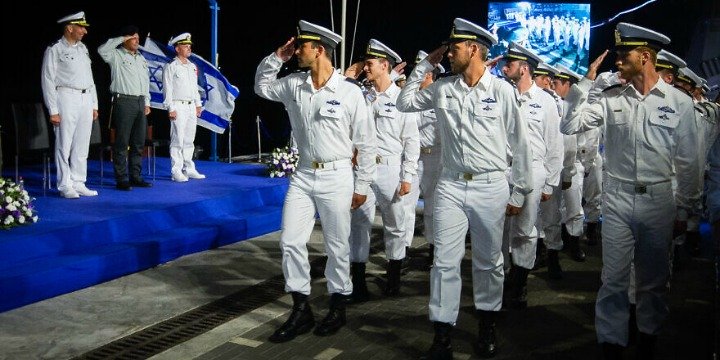
As terror groups and foreign militaries upgraded their weapons, the Israeli Navy remains two steps ahead of the Jewish state’s enemies.
By Yaakov Lappin, JNS
As Israel’s adversaries equip themselves with growing numbers of advanced anti-ship cruise missiles, the Israel Navy’s Weapons Systems Department must keep up with the threats and ensure that countermeasures are installed onboard Israeli ships in time.
The department’s technological personnel is made up of student-soldiers in their early 20s who have completed degrees in electrical engineering, mathematics and physics, as part of their military enlistment program.
After they join the department, “what they do is incredible,” stated a senior naval officer.
Adversaries such as Hezbollah, the Syrian military and Iranian military forces are upgrading their weapons, and the Israel Navy is involved in ambitious projects to make sure that they are two steps ahead. This means upgrading an array of the navy’s own systems continuously.
Everything from air-defense systems, electronic warfare, radars, sonars, command and control, missiles and other systems must be developed quickly enough to allow Israeli naval ships to operate in highly threatened environments.
“We must have a personnel core that has the engineering and the operational pictures in their minds,” said the source. “This is the big advantage that we have with our personnel. They live in our operational reality, and they give incredibly fast engineering solutions in timeframes that are almost like those of startup companies.”
The department’s development teams work closely with Israeli defense industries to create state-of-the-art combat systems, often going into the labs of defense companies to work with them. Much of their work involves developing in-house algorithms, for tasks such as image and signals processing. The end result is far beyond an “off-the-shelf” product.
The same holds true in the world of underwater sonar detection.
The source recounted how counterparts in Western militaries were shocked when they discovered the age of the Israeli personnel. “When they hear about this, their jaw drops. We have conducted trials with partners. Their personnel in equivalent departments is made up of people in their 50s or 60s. I show up with a group of ‘kids.’ They used to smile when they saw that, but now they know us,” said the officer.
A senior officer from a friendly country once entered an Israel Navy ship’s combat management center and “was stunned by what he saw—people in their 20s conducting tasks that people in their 50s do in other navies. When the two units met, it was an intergenerational meeting,” he added.
Anomalies and False Alarms
The Weapons Systems Department of the Israel Navy resembles startups in its working methods as well. The development teams get thrown a problem and have to come up with solutions in little time. Those solutions have transformed the capabilities of the Navy, according to the source.
The Israel Navy has long ceased preparing purely for Navy-on-Navy combat, although this remains an important scenario for it. A central challenge, however, stems from non-state terror armies like Hezbollah armed with radar-guided anti-ship cruise missiles. An organization that has this type of attack capability does not need to maintain its own fleet, the source pointed out. “They have long-range missiles … they can fire and forget.” Many of these missiles have been supplied by Iran.
“This has changed the rules of the game,” added the officer.
One of the key projects of the Navy has been to develop sensors and command systems that hermetically seal Israel’s sea borders, both on the surface and underwater.
To achieve this, complex algorithms had to be developed for radar and sonar so that operators could quickly recognize what they are seeing, and be able to tell the difference between an enemy scuba diver and a sea turtle, for example. Fusing multiple images from sensors into a single interface has also been an important capability for the Navy to develop. Regional arena controllers, who sit in coastal control rooms, now have access to such screens.
“We take all of this intelligence from multiple sensors and put it on the same screen. They immediately see what is an anomaly and what is a false alarm—in real time,” said the officer. The new system, built by Israel Aerospace Industries-Elta, was first deployed two years ago and is now undergoing further upgrades.
The Israel Navy is also preparing to receive new, German-made Sa’ar 6-class warships, an acquisition that has kept the Weapons Systems Department teams busy with numerous adjustments. One of their projects has been to reduce the new ships’ radar cross-section—or how visible they are to enemy radar—as much as possible.
“Twenty-one and 22-year-olds are doing this,” said the officer. “They are very young, and they are doing something very significant in the world.”